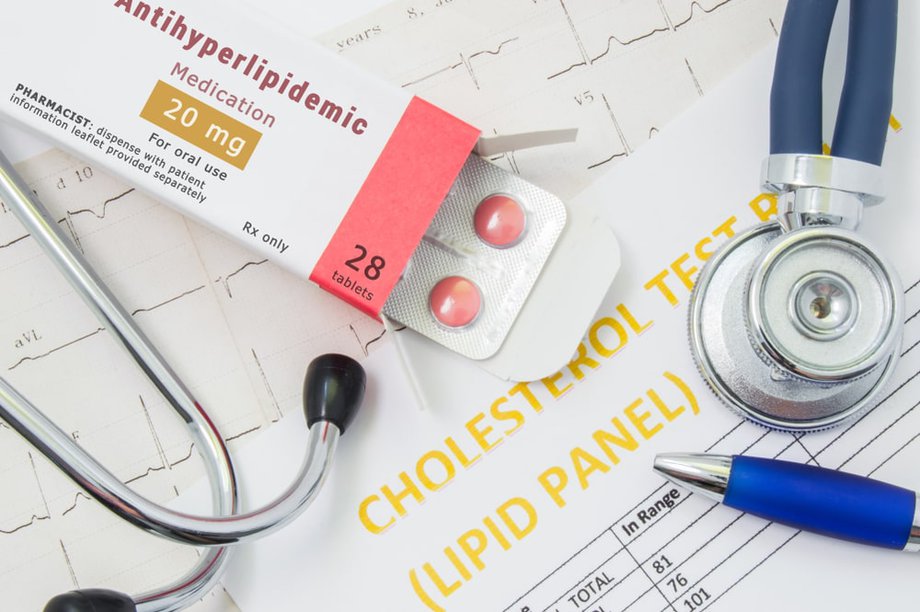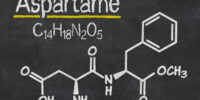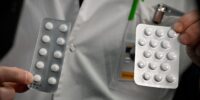What Is The Role Of Antihyperlipidemic Drugs In Reducing Cholesterol?

This article aims to explore the role of antihyperlipidemic drugs in reducing cholesterol levels.
Antihyperlipidemic drugs are a class of medications used to lower lipid levels in the blood, particularly cholesterol.
This article will discuss the different types of antihyperlipidemic drugs and their mechanisms of action, highlighting the benefits of their use in lowering cholesterol.
Considerations for drug selection, including patient characteristics and potential side effects, will also be discussed.
In addition to medication, lifestyle modifications such as dietary changes and exercise will be addressed as important adjuncts to drug therapy for cholesterol reduction.
The article will also touch upon the importance of monitoring and follow-up to ensure the effectiveness and safety of antihyperlipidemic drug therapy.
Finally, future developments and ongoing research in this field will be explored to provide a comprehensive understanding of the current and potential future role of antihyperlipidemic drugs in reducing cholesterol levels.
Key Takeaways
- The benefits of antihyperlipidemic drugs outweigh potential risks when used under medical supervision.
- Factors such as overall health status, potential drug interactions, and specific lipid profile should be considered when selecting appropriate medications.
- Regular monitoring of liver function and lipid profiles, as well as patient adherence to medication regimen, are crucial for successful therapy.
- Lifestyle modifications, such as regular exercise and dietary changes, complement the use of antihyperlipidemic drugs in reducing cholesterol levels.
Types of Antihyperlipidemic Drugs
There are several distinct types of antihyperlipidemic drugs that are commonly used to target and reduce cholesterol levels. These drugs include statins, fibrates, bile acid sequestrants, cholesterol absorption inhibitors, and PCSK9 inhibitors.
Statins are the most commonly prescribed antihyperlipidemic drugs and work by inhibiting an enzyme involved in cholesterol synthesis.
Fibrates, on the other hand, primarily target triglycerides and increase high-density lipoprotein (HDL) cholesterol levels.
Bile acid sequestrants bind to bile acids in the intestines, preventing their reabsorption and promoting excretion.
Cholesterol absorption inhibitors reduce cholesterol absorption in the intestines, leading to decreased cholesterol levels.
PCSK9 inhibitors are a newer class of drugs that work by increasing the number of LDL receptors in the liver, resulting in increased removal of LDL cholesterol from the bloodstream.
It is important to note that these antihyperlipidemic drugs can have side effects and may interact with other medications, requiring careful monitoring and consideration by healthcare professionals.
Mechanisms of Action
This paragraph will discuss the mechanisms of action of antihyperlipidemic drugs.
One mechanism involves the inhibition of HMG-CoA reductase, which is responsible for the synthesis of cholesterol in the liver.
Another mechanism involves the activation of peroxisome proliferator-activated receptors, which play a role in lipid metabolism and can help reduce cholesterol levels.
Additionally, antihyperlipidemic drugs can bind to bile acids and promote their excretion, leading to a decrease in cholesterol levels.
Inhibition of HMG-CoA Reductase
The inhibition of HMG-CoA reductase plays a crucial role in reducing cholesterol levels, as it is the key enzyme responsible for the synthesis of cholesterol in the liver.
HMG-CoA reductase inhibitors are a class of antihyperlipidemic drugs that specifically target and inhibit this enzyme. By blocking HMG-CoA reductase, these drugs effectively reduce the production of cholesterol in the liver. This inhibition leads to a decrease in the intracellular levels of mevalonate, a precursor of cholesterol synthesis.
Consequently, the liver upregulates the expression of LDL receptors on its surface, enhancing the uptake of circulating low-density lipoprotein (LDL) cholesterol. This mechanism results in a decrease in LDL cholesterol levels in the bloodstream.
Additionally, HMG-CoA reductase inhibitors also increase the clearance of LDL cholesterol from the plasma by stimulating the conversion of LDL to bile acids in the liver.
Overall, the inhibition of HMG-CoA reductase by antihyperlipidemic drugs effectively regulates cholesterol synthesis and reduces cholesterol levels.
Activation of Peroxisome Proliferator-Activated Receptors
Activation of peroxisome proliferator-activated receptors (PPARs) is a significant regulatory mechanism in the modulation of lipid metabolism and the maintenance of lipid homeostasis. PPARs are nuclear receptors that play a crucial role in the transcriptional regulation of genes involved in lipid metabolism.
There are three subtypes of PPARs: PPARα, PPARβ/δ, and PPARγ. PPARα activation primarily affects fatty acid oxidation, while PPARγ activation is involved in adipogenesis and insulin sensitivity. PPARγ activation also promotes the expression of genes involved in cholesterol efflux and decreases the expression of genes involved in cholesterol synthesis. This dual effect of PPARγ activation contributes to the lipid-lowering effects observed with PPARγ agonists.
PPARα and PPARβ/δ activation also have lipid-lowering effects, but their mechanisms of action are less well-understood. Overall, activation of PPARs represents a promising target for the development of antihyperlipidemic drugs that can effectively reduce cholesterol levels.
Binding and Excretion of Bile Acids
Binding and excretion of bile acids play a crucial role in the regulation of lipid metabolism and the maintenance of lipid homeostasis. Bile acids are synthesized from cholesterol in the liver and are then stored in the gallbladder.
When dietary fats are consumed, bile acids are released into the small intestine, where they aid in the digestion and absorption of dietary fats. Bile acids form micelles with dietary fats, facilitating their absorption into the enterocytes.
After absorption, bile acids are actively transported back to the liver via the enterohepatic circulation. In the liver, bile acids are reabsorbed and reused for bile acid synthesis. This process not only facilitates the absorption of dietary fats but also helps in the elimination of excess cholesterol from the body.
Antihyperlipidemic drugs, such as bile acid sequestrants, work by binding to bile acids in the intestine, preventing their reabsorption and promoting their excretion, thereby reducing cholesterol levels in the body.
Inhibition of PCSK9
Inhibiting PCSK9 disrupts the regulation of lipid metabolism and disturbs the delicate balance of lipid homeostasis, much like a wrench thrown into the intricate machinery of a well-oiled system. PCSK9 inhibitors are a class of antihyperlipidemic drugs that specifically target PCSK9, a protein involved in the degradation of low-density lipoprotein (LDL) receptors. By inhibiting PCSK9, these drugs increase the number of LDL receptors available on the surface of cells, leading to enhanced LDL cholesterol clearance from the bloodstream. The modulation of LDL receptors by PCSK9 inhibitors results in a reduction of LDL cholesterol levels, thereby reducing the risk of cardiovascular events. The efficacy and safety of PCSK9 inhibitors have been demonstrated in clinical trials, making them a promising therapeutic option for individuals with hypercholesterolemia who are unable to achieve optimal cholesterol levels through lifestyle modifications and statin therapy.
| PCSK9 inhibitors | LDL receptor modulation |
|---|---|
| Evolocumab | Increases LDL receptor |
| Alirocumab | expression on cell |
| Bococizumab | surface |
| Inclisiran |
Modulation of Lipoprotein Metabolism
Modulation of lipoprotein metabolism is a complex process that involves the regulation of various factors influencing the synthesis, secretion, and clearance of lipoproteins, ultimately impacting the balance of lipid homeostasis.
Lipoproteins play a crucial role in transporting lipids, including cholesterol, throughout the body. Antihyperlipidemic drugs target specific steps in lipoprotein metabolism to reduce cholesterol levels. One such step is the inhibition of cholesterol absorption from the intestines. By blocking the absorption of dietary cholesterol, antihyperlipidemic drugs decrease the amount of cholesterol that enters circulation.
Additionally, these drugs can also affect lipoprotein synthesis in the liver. They can decrease the production of very-low-density lipoproteins (VLDL), which are responsible for transporting triglycerides to peripheral tissues.
By modulating lipoprotein metabolism, antihyperlipidemic drugs effectively reduce cholesterol levels and contribute to the management of dyslipidemia.
Benefits of Antihyperlipidemic Drugs
Antihyperlipidemic drugs have been shown to effectively lower cholesterol levels, leading to a reduction in the risk of cardiovascular diseases and other related complications.
The benefits of long-term use of these drugs include decreased incidence of heart attacks, strokes, and other cardiovascular events. Additionally, they can help improve the overall health of patients by reducing the risk of atherosclerosis and improving blood flow.
However, it is important to note that antihyperlipidemic drugs may also have potential side effects. These can include muscle pain, liver damage, gastrointestinal issues, and an increased risk of type 2 diabetes. Therefore, it is crucial for healthcare professionals to carefully monitor patients who are on these medications, especially those with pre-existing conditions.
Regular monitoring of liver function and lipid profiles can help detect any potential adverse effects early on and allow for appropriate management. Overall, the benefits of antihyperlipidemic drugs in reducing cholesterol outweigh the potential risks when used under proper medical supervision.
Considerations for Drug Selection
Considerations for selecting appropriate medications for managing hyperlipidemia include factors such as the patient’s overall health status, potential drug interactions, and the specific lipid profile that needs to be targeted.
One important consideration is the drug efficacy, as the chosen antihyperlipidemic medication should effectively reduce the levels of cholesterol in the patient’s blood. Different drugs may have varying levels of effectiveness in lowering cholesterol, and therefore, the physician needs to choose the most suitable drug based on the patient’s individual needs.
Another consideration is patient adherence to the medication regimen. Adherence plays a crucial role in the success of antihyperlipidemic therapy, as consistent and regular usage of the medication is required to achieve optimal results. Therefore, the physician should consider the patient’s ability and willingness to adhere to the prescribed medication regimen when selecting the appropriate antihyperlipidemic drug.
Lifestyle Modifications
One crucial aspect to address in managing hyperlipidemia involves implementing lifestyle modifications that can have a significant impact on improving lipid levels.
Lifestyle modifications, such as incorporating regular exercise and making dietary changes, can play a vital role in reducing cholesterol levels. Exercise has been shown to increase high-density lipoprotein (HDL) cholesterol, also known as ‘good’ cholesterol, while simultaneously reducing low-density lipoprotein (LDL) cholesterol, or ‘bad’ cholesterol.
Additionally, dietary changes aimed at reducing saturated and trans fats can help lower LDL cholesterol levels. Incorporating more fruits, vegetables, whole grains, and lean proteins into one’s diet can also contribute to improving lipid levels.
By prioritizing exercise and making dietary adjustments, individuals can effectively complement the use of antihyperlipidemic drugs in reducing cholesterol levels.
Monitoring and Follow-Up
Regular monitoring and follow-up are essential to ensure the effectiveness of interventions in managing hyperlipidemia and maintaining optimal lipid levels. Long-term effects and patient satisfaction are important considerations in the management of hyperlipidemia.
Monitoring lipid levels allows healthcare professionals to assess the effectiveness of antihyperlipidemic drugs in reducing cholesterol. Regular blood tests can measure total cholesterol, LDL cholesterol, HDL cholesterol, and triglyceride levels. These tests provide valuable information about the patient’s lipid profile and help determine if further adjustments to the treatment plan are necessary.
In addition to lipid monitoring, follow-up visits allow healthcare professionals to assess the patient’s overall health and well-being. These visits provide an opportunity to address any concerns or questions the patient may have and to reinforce the importance of lifestyle modifications and medication adherence. Regular follow-up also allows for the identification of any potential side effects or complications associated with antihyperlipidemic drugs.
Table: Benefits of Regular Monitoring and Follow-Up
| Benefits | Description |
|---|---|
| Early detection of complications | Regular monitoring allows for the timely identification of any potential complications associated with antihyperlipidemic drugs. |
| Treatment optimization | Follow-up visits provide an opportunity to assess the patient’s response to treatment and make any necessary adjustments for optimal lipid control. |
| Patient education and empowerment | Regular follow-up visits allow healthcare professionals to educate patients about the importance of lifestyle modifications and medication adherence, empowering them to take an active role in their lipid management. |
| Addressing patient concerns | Follow-up visits provide a platform for patients to voice concerns or ask questions, ensuring their satisfaction with the treatment plan. |
| Long-term management | Regular monitoring and follow-up facilitate long-term management of hyperlipidemia, helping to prevent future cardiovascular events and maintain optimal lipid levels. |
By implementing regular monitoring and follow-up, healthcare professionals can effectively evaluate the long-term effects of antihyperlipidemic drugs, address patient concerns, and optimize treatment strategies. This comprehensive approach contributes to patient satisfaction and enhances the overall management of hyperlipidemia.
Future Developments and Research
Future developments and research in the field of antihyperlipidemic drugs aim to address the current challenges in reducing cholesterol levels. One promising area of exploration is the development of novel medications that target specific pathways involved in cholesterol synthesis and metabolism.
For instance, researchers are investigating the use of PCSK9 inhibitors, which have shown significant efficacy in lowering LDL cholesterol levels. Additionally, there is ongoing research on the combination therapy of different antihyperlipidemic drugs to achieve better cholesterol control.
Another area of interest is the advancement of non-pharmacological interventions, such as dietary modifications and lifestyle changes, as adjunctive therapies to antihyperlipidemic drugs. These future treatments hold promise for improving the management of hyperlipidemia and reducing the risk of cardiovascular diseases associated with high cholesterol levels.
However, further research is needed to ensure their safety, efficacy, and long-term effects.
Frequently Asked Questions
Are antihyperlipidemic drugs effective in reducing cholesterol levels?
Antihyperlipidemic drugs, particularly statins, have been shown to effectively reduce cholesterol levels. New developments in antihyperlipidemic drugs continue to enhance their effectiveness in lowering cholesterol, providing better treatment options for individuals with hyperlipidemia.
Are there any potential side effects or risks associated with antihyperlipidemic drugs?
Potential side effects and risks associated with antihyperlipidemic drugs include gastrointestinal disturbances, liver dysfunction, muscle pain, and increased blood sugar levels. Long-term effects and drug interactions should be monitored, as well as regular cholesterol level checks.
Can antihyperlipidemic drugs be used as a standalone treatment for high cholesterol, or are they typically used in combination with other medications or lifestyle modifications?
Antihyperlipidemic drugs can be used as standalone treatment for high cholesterol, but they are often used in combination with other medications and lifestyle modifications. Combination therapy options with antihyperlipidemic drugs provide more effective cholesterol reduction.
How long does it typically take to see a significant reduction in cholesterol levels with antihyperlipidemic drugs?
The average time to see a significant reduction in cholesterol levels with antihyperlipidemic drugs varies depending on the individual and the dosage effectiveness. It is important to consult with a healthcare professional for personalized information.
Are there any specific groups of people who should avoid or use caution when taking antihyperlipidemic drugs?
Certain groups, such as pregnant women and those with liver or kidney disease, should avoid or use caution when taking antihyperlipidemic drugs due to potential risks associated with these medications.








